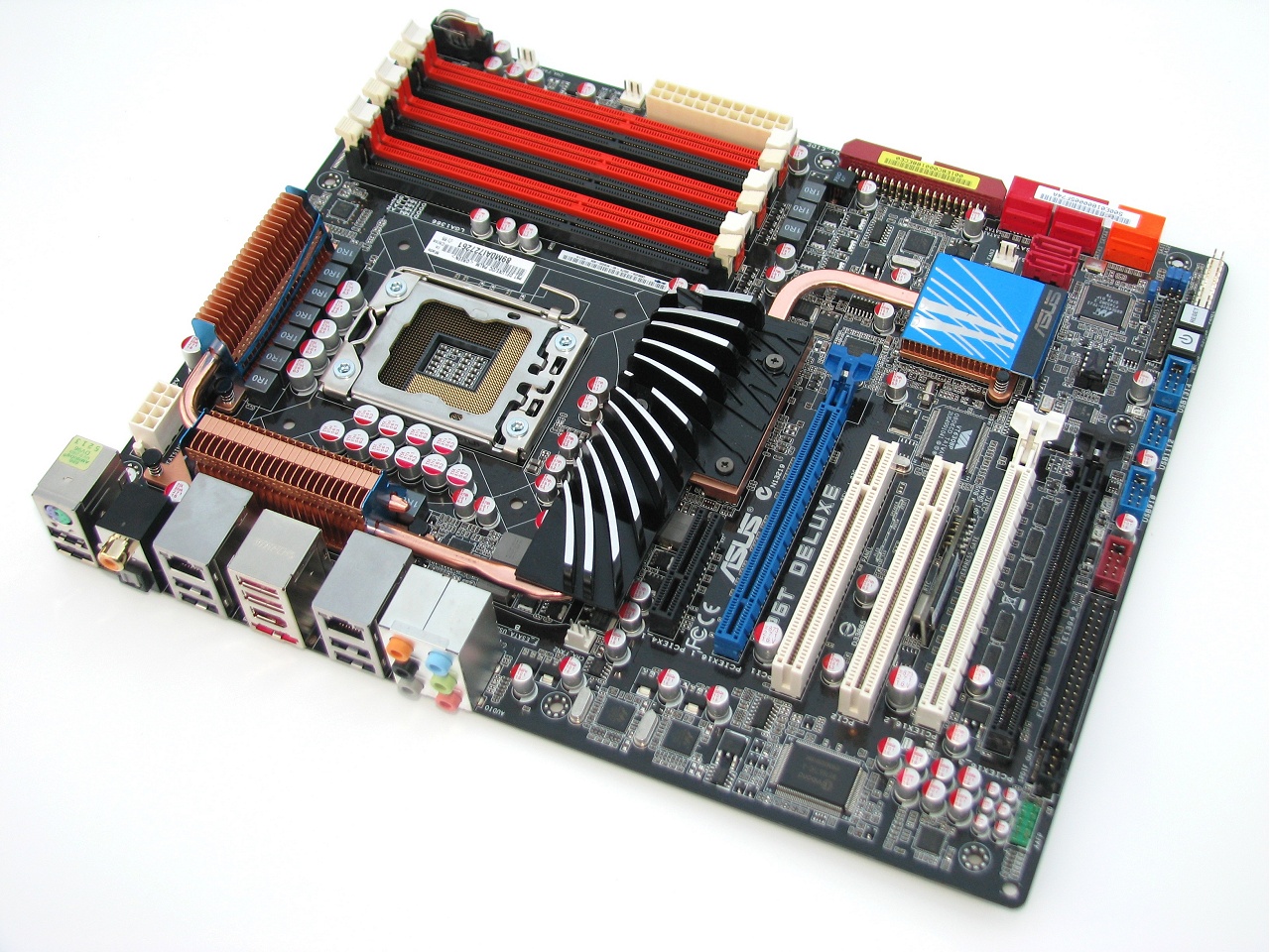Board Features & Specifications
The Asus P6T Deluxe list of integrated peripherals includes Firewire, dual Gigabit LAN, 8-Channel audio that supports EAX 4.0, eSATA, SATA RAID, EPU-6 Engine, Crossfire + SLI support, Express Gate SSD, and the list just goes on.

Memory support is no longer dictated by the motherboard as the memory controller has been relocated to the processor. Evidently the motherboard still has a say in how many DIMM slots it will support, and while it does set the memory frequency and voltage, they must work to the Core i7 specifications.


While the Intel pre-production motherboard that we originally used to test the Intel Core i7 processors only featured four DIMM slots, the P6T Deluxe supports six. This makes it possible to use a pair of triple-channel memory modules on this motherboard for a maximum memory configuration of 12GBs. Users will prefer to use either 1GB or 2GB memory modules with the P6T Deluxe.

As it stands the Core i7 processors work with either DDR3-1066 or DDR3-1333 memory, while our original Core i7 results were recorded using 1066MHz memory. However through overclocking the P6T Deluxe offers official support for DDR3-1600 memory as well. At this point we are yet to discover what kind of impact memory timings and frequencies have on Core i7 performance, and this is likely something we will look at in the near future.

The Asus P6T Deluxe features a total of three PCI Express 2.0 x16 slots, though only two of them can provide the full x16 bandwidth. The third slot is limited to x1 bandwidth making it near useless for performance tasks.
Thankfully Asus turned a little creative here giving the user the option to run the primary slot at x16, while the second and third slots operate at x8. This will be far more useful to those running CrossfireX or 3-way SLI cards.
On that note, while CrossfireX support is present in this motherboard, the P6T Deluxe only goes up to 2-way SLI, while 3-way support has been reserved for the more expensive Rampage II Extreme model. This is because the Rampage II Extreme features the Nvidia nForce 200 chip while the P6T Deluxe does not.
Asus still had to license the SLI technology from Nvidia to gain support for two graphics cards, and again not all Intel X58 motherboards will necessarily provide this support.

Other expansion slots include two traditional PCI slots and a single PCI Express 2.0 x4 slot which should provide users with more than enough flexibility. Moving on to storage, the ICH10R south bridge which we are very familiar with has been coupled with the X58 chipset, and still provides support for six SATA 3Gb/s ports.

There are another two onboard SATA ports present that are connected to a Marvell 88SE6320 controller. These are actually SAS (Serial Attached SCSI) ports, which is a workstation-level storage solution. SAS is faster than traditional SATA, with server-level data reliability. Furthermore, SAS is backward-compatible with SATA devices, making onboard SAS ports both flexible and future proof.
Finally on the storage front, Asus has also included another Marvell controller, this time the 88SE6111 which provides support for a single IDE channel and one eSATA port. The ICH10R south bridge does not support IDE and therefore Asus has added this aging technology to the P6T Deluxe for those that might need it. Honestly, on such a cutting edge piece of technology we do not see the need for IDE support, but the eSATA port is a welcome addition.
Another chipset feature is the Intel High Definition Audio (Intel HD Audio). This provides eight independent DMA audio engines that support multiple audio streams with audio codecs. Driving this feature is the ADI AD2000B codec, enabling high-quality 192KHz/24-bit audio output.

The P6T Deluxe supports IEEE1394a (FireWire 400), offering bandwidth up to 400 Mbps, suitable for bandwidth-intensive applications like digital video (DV), professional audio, and hard drives which often consume hundreds or even thousands of megabytes of data per file. The board provides two 1394a ports due to the inclusion of the VIA VT6308P PCI IEEE-1394 FireWire controller. The more obvious USB 2.0 support comes from the ICH10R chipset, and therefore the P6T Deluxe supports a total of twelve ports.

The dual Gigabit LAN design allows a PC to serve as a network gateway for managing traffic between two separate networks. This capability ensures rapid transfer of data from WAN to LAN without any added arbitration or latency. No more bottleneck to handle large amounts of data such as video, audio, and voice. The P6T Deluxe features dual Marvell 88E8056 Gigabit LAN controllers which use the PCI Express bus for maximum throughput.
